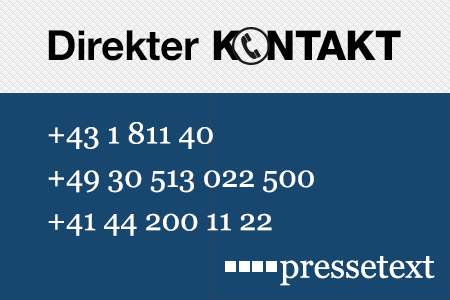Thrombectomy in acute stroke therapy: Feasible for very old patients, but not without risks
Lisbon (ptp021/18.06.2018/09:20) Mechanical thrombectomy is an increasingly important therapy for acute stroke that can also benefit the very old - assuming a careful selection of patients and risk assessment. This is a finding of a Portuguese study presented at the 4th Congress of the European Academy of Neurology (EAN) in Lisbon.
For several years now, the endovascular thrombectomy has been a way of removing larger vascular obstructions. In this procedure, the thrombus is extracted from the cerebral vessel via a catheter inserted in the groin. Numerous international studies have shown that endovascular treatment is a substantial improvement over purely drug-based therapy. The procedure is especially effective in dealing with extremely long blood clots and large obstructions of the cerebral arteries and often yields positive results: Thanks to this procedure, more than 60 percent of those treated survive the stroke without any subsequent impairment or with only minor subsequent impairment.
Dr Ary Lopes de Sousa (Lisbon) reported: "More and more study results show the high effectiveness of mechanical removal of blood clots after a stroke. But researchers are still trying to determine the type of patient for whom this relatively new procedure is the best treatment option."
Dr Ary de Sousa and his colleagues reviewed the treatment success of thrombectomy in more than 200 patients who had suffered an anterior acute ischemic stroke (AIS) and had no or only slight disability prior to this event. The patients were divided into two groups: one with individuals under 80 and one with individuals 80 and older.
One third of the 80 and over patients functionally independent after the procedure
In the group of elderly patients age 80 and older hypertension was more frequent, the same goes for transitory ischemic attacks, a type of impaired circulation in the brain that leads to short-term neurological complaints. The actual treatment did not differ for the two groups, e.g. in terms of the time frame of the revascularization. But in the older group, two thirds of the patients exhibited a poor functional outcome at three months after the treatment, i.e. they were moderately or severely limited in their ability to handle their daily tasks. The number of impaired individuals was substantially larger there than in the younger group, where just short of half (46 percent) faced limitations in their everyday lives. On the other hand, one third of the patients age 80 and older were able to handle their everyday lives three months after the treatment with no or mild impairments from the stroke. In terms of death, no difference was observed between the two age groups.
Dr Ary de Sousa: "For patients over 80, thrombectomy appears to be riskier than for younger patients. But one third of the patients over 80 can be fully functional in their everyday lives after the procedure, so we must identify the factors associated with this favorable outcome. This will support us applying this modern procedure efficiently to those individuals among the very old who can benefit from it."
Source: Abstract 4th EAN Congress Lisbon 2018: O206 S. Lopes de Sousa et al: Mechanical thrombectomy for acute ischemic stroke in the very old
(end)| Aussender: | Bettschart&Kofler Kommunikationsberatung GmbH |
| Ansprechpartner: | Dr. Birgit Kofler |
| Tel.: | +43-1-3194378 |
| E-Mail: | kofler@bkkommunikation.com |
| Website: | www.ean.org/lisbon2018/ |


